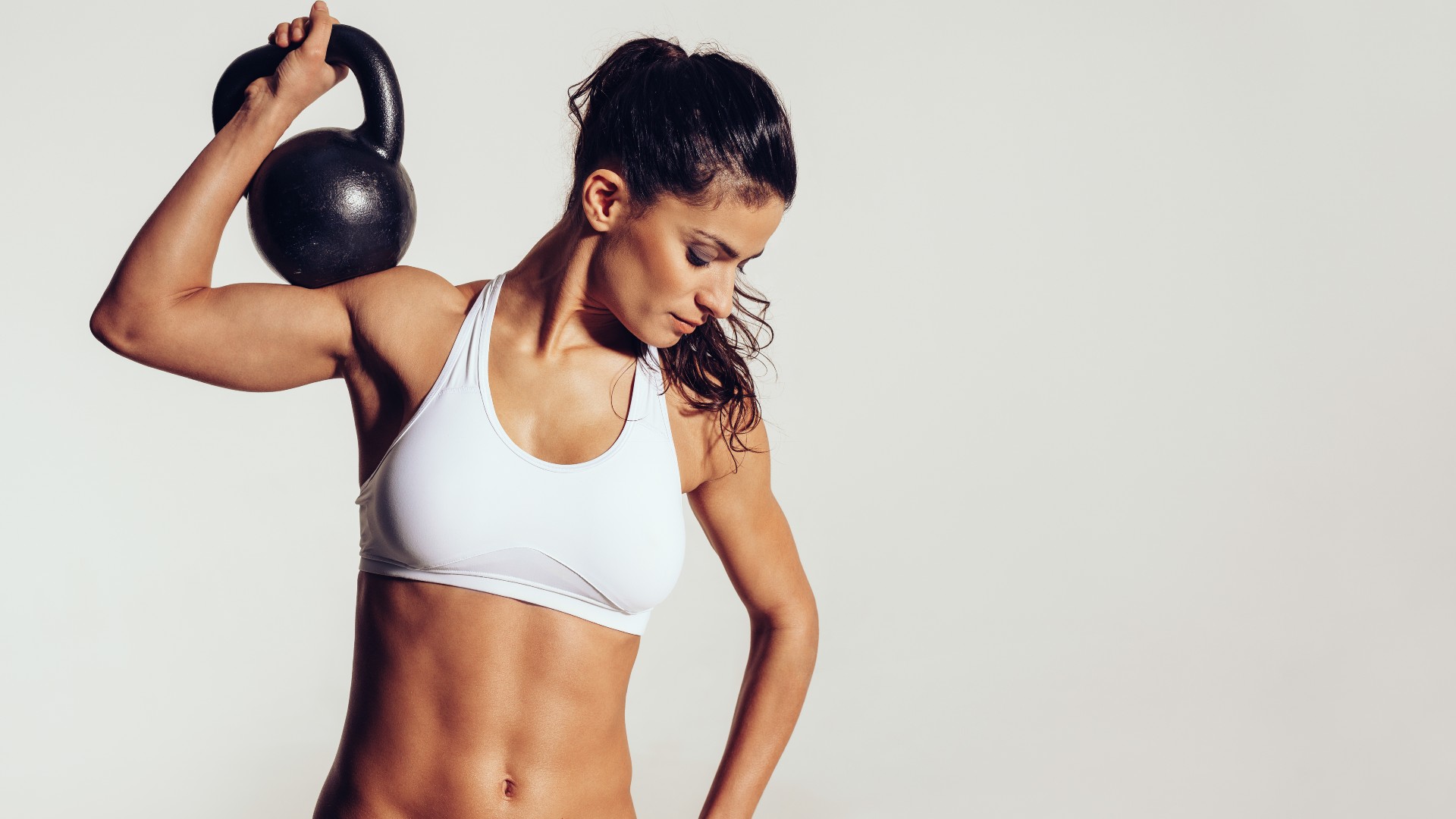
If you’re a beginner, I'd recommend adding these five kettlebell ab exercises to your core routine. To build solid core foundations, you need a set of exercises that will help you develop basic functional strength and target your core muscles in their entirety. So, consider these moves as your bread-and-butter kettlebell exercises.
By adding these into your exercise regime using kettlebells, you could lift heavier, run faster and move with better posture and power — all by strengthening the muscles responsible for helping you move properly and safely.
These are five of the best kettlebell ab exercises for beginners and anyone looking to build a stronger core. We’ve also rounded up the 5 best kettlebell exercises for beginners if you prefer hitting muscle groups all over during your next workout.
Can you get abs with kettlebells?
Free weights are much more versatile than barbells, giving you more flexibility within your training regime. Kettlebells are typically harder to grip and control than dumbbells, making them brilliant at building stability, core control, muscular power and coordination.
Because free weights are versatile, you can train your core muscles more creatively. As we discuss in the article 7 best kettlebell ab exercises for strengthening your core muscles (advanced exercisers, head here for more technical ab inspiration), your core muscles don’t just include your abs.
Nope, your hip flexors, glutes and diaphragm are all core muscles, alongside deep, stabilizers like the transverse abdominis and internal obliques. Any muscles that wrap around your trunk, drive movement and support your spine are part of your core network.
But that doesn’t equate to popping abs. You can put the hard work in to grow your ab muscles, but ab definition is a product of low body fat percentage. If fat loss is the goal, check out these 5 reasons you can’t see your abs despite working out.
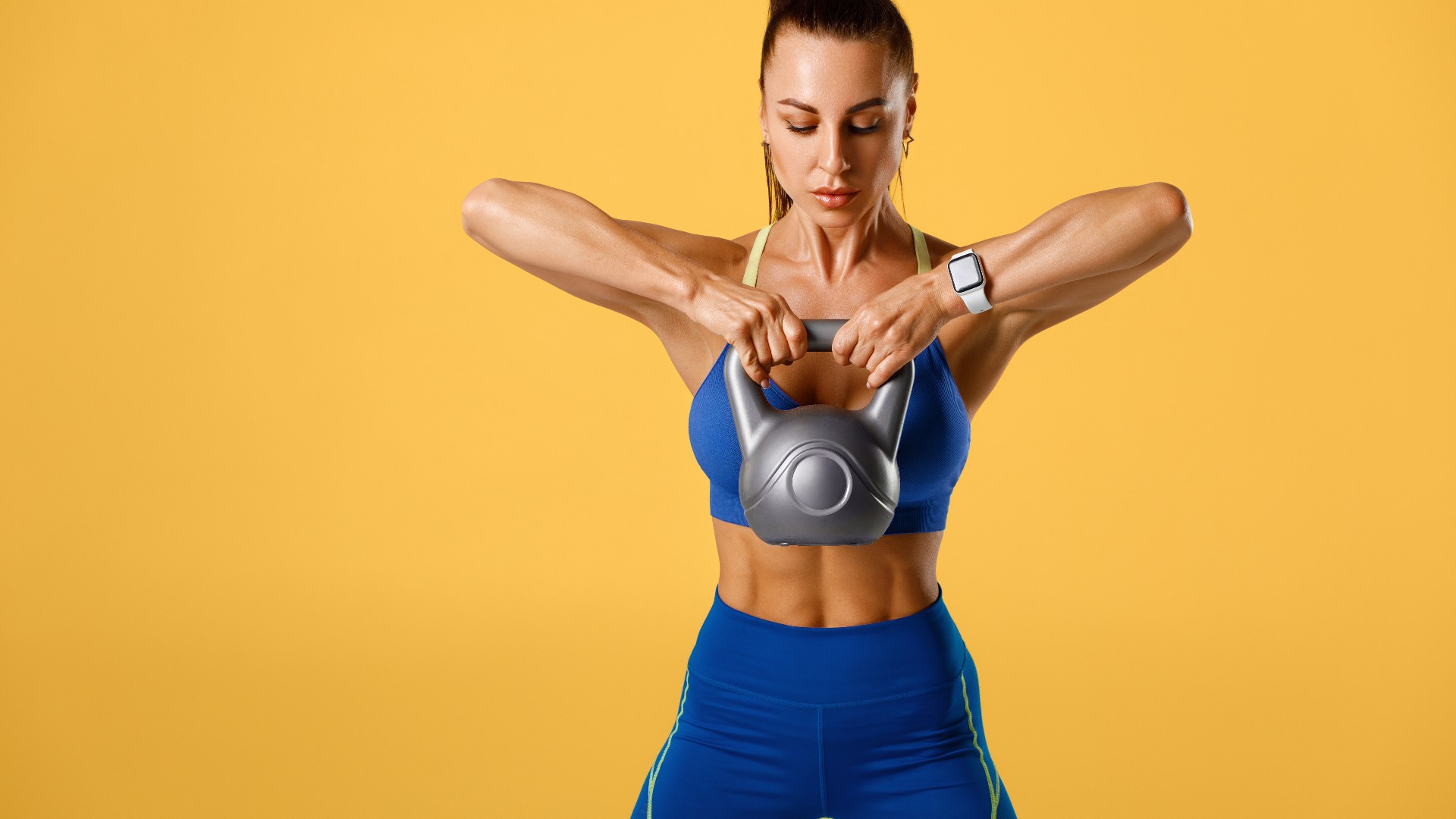
5 best kettlebell ab exercises for beginners
The exercises below allow you to dual-load or use singular weights to work on balance and stability — a key part of unilateral training and a simple way to isolate and strengthen weaker muscle groups. Learn how to hold a kettlebell properly and check these five moves out.
1. Half-Turkish get-ups
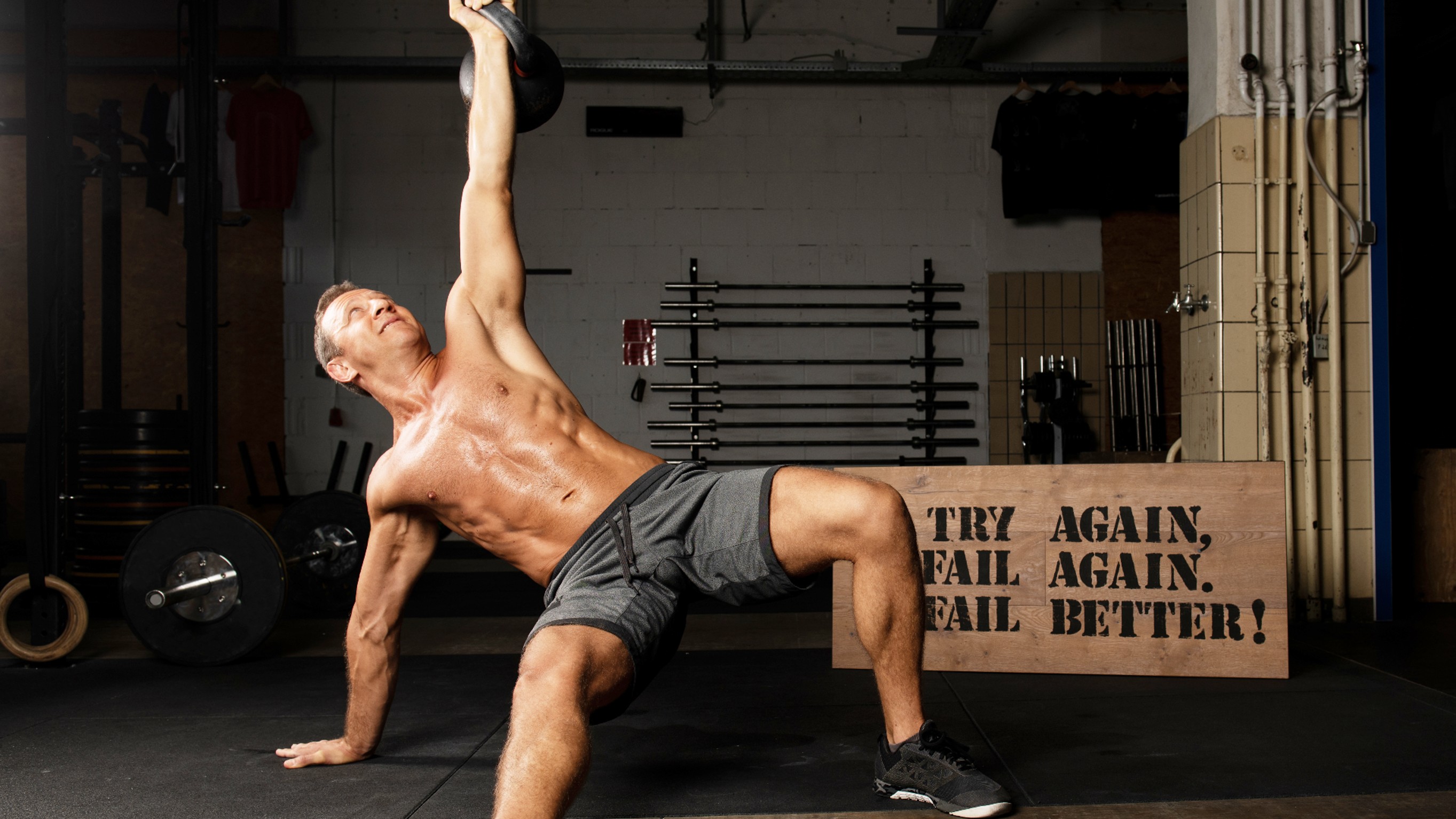
Unlike Turkish get-ups, the half-get-up is the perfect bridging exercise for beginners to develop the movement pattern. In this variation, you won’t stand up — hence the name.
The move still requires stability and core engagement, recruiting muscles such as your shoulders, triceps, back, hip flexors, obliques and abs.
- Start on your back, gripping your weight in your right hand
- Engage your core and extend your right arm overhead in line with your shoulder
- Bend your right knee and plant your right foot onto the ground. Extend your left leg away from you and keep your left arm beside your body
- Contract your upper body muscles and tuck your chin
- Sit up and rest your left elbow on the floor next to your body
- Keep the weight punching overhead and the arm locked out. Look at your weight at all times
- Push upwards again and transition from the left elbow to the left hand on the ground, arm now straight
- Press through your right foot, then lift your hips toward the ceiling. Pause
- Reverse each step back down. Switch sides.
2. Kettlebell twists
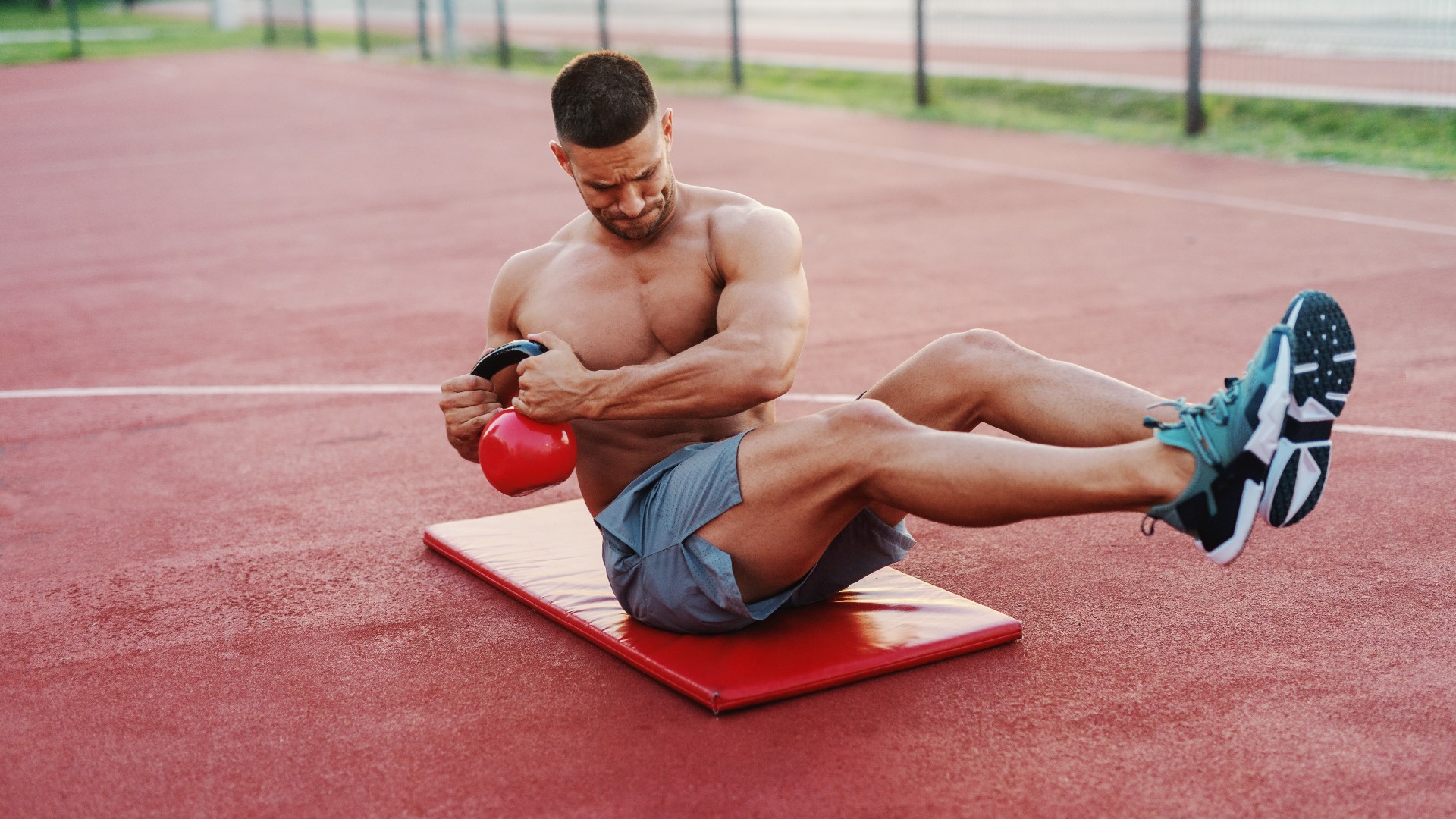
Twists are a great way to target your oblique muscles and help strengthen and stabilize your lower back, preparing you for big lifts like deadlifts or back squats. Here’s how to do Russian twists in more detail.
Avoid arching your back or leaning back too far and try not to swing your legs. If you struggle with back pain, it’s worth checking with your doctor before adding twists to your regular workout routine. You can also try the move with both feet planted on the floor.
- Sit on an exercise mat
- Engage your core as you lean slightly back, lifting your legs off the floor so you are in a V-shape position with knees bent
- Brace your core and grip a kettlebell close to the center of your chest
- Begin by twisting your torso from side to side, touching the kettlebell close to your hips each time. Keep your legs still throughout and follow the weight with your eyes.
3. Kettlebell farmer’s hold
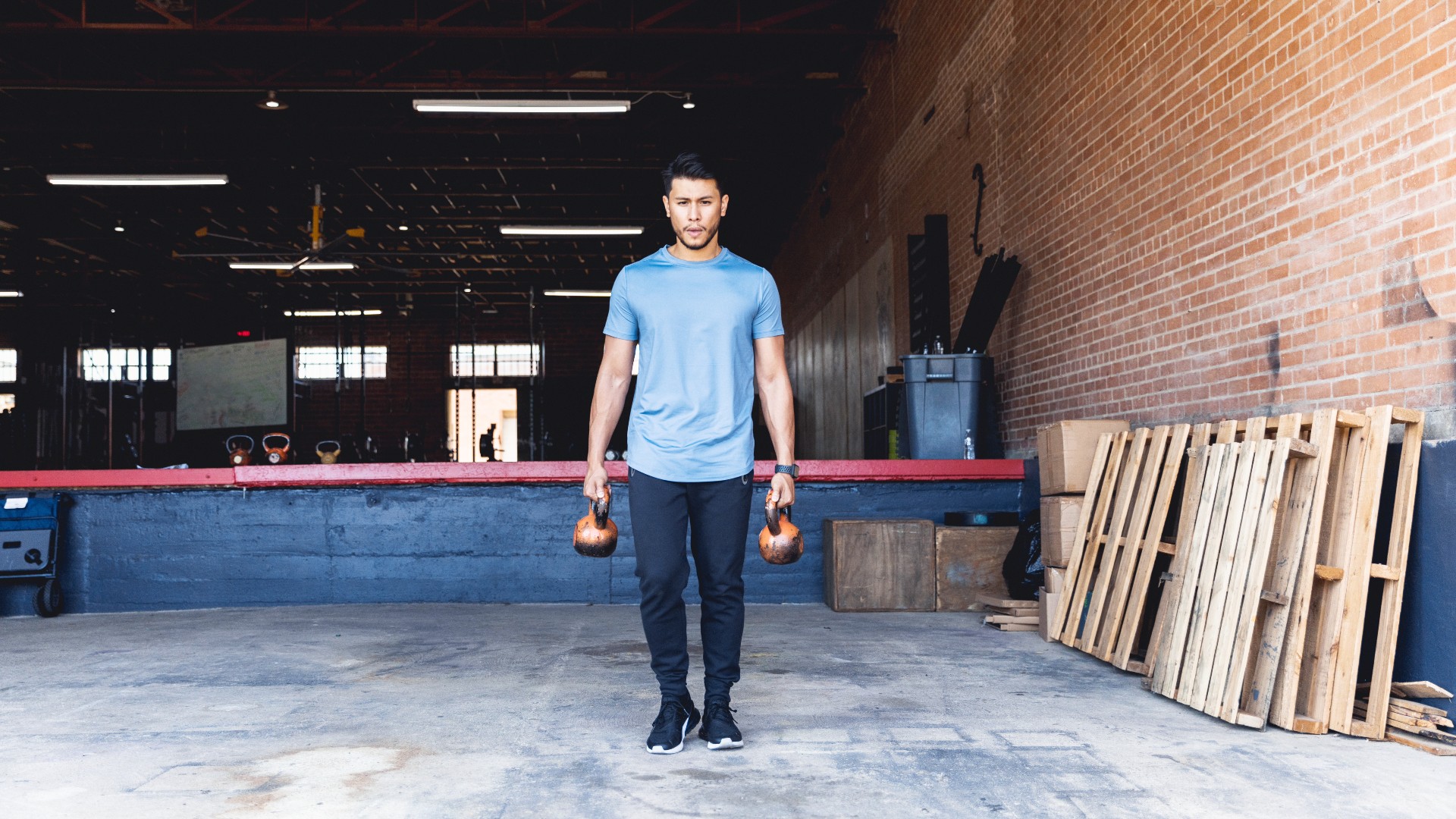
Unlike the farmer’s walk, the kettlebell farmer’s hold requires you to stand still, which can be more accessible for beginners. But it still challenges core stability and balance, developing grip strength and muscles in the shoulders, chest, core, traps and arms. Start with light weights first before adding heavier loads. You can learn more about the farmer’s hold here.
- Stand with your feet hip-width apart and two weights placed on either side of your feet
- Bend your knees and lower into a squat position with your chest proud, spine neutral and weight evenly distributed across your feet
- Grip both kettlebells, engage your core and rotate your shoulders back and down
- Keep your chest proud, look forward, and push the ground away to stand. Hold.
Avoid any excessive leaning to one side, back or forward. Keep your shoulders pulled back to avoid hunching and straining your back muscles. You can start with one weight to isolate sides or two for heavier loading.
4. Kettlebell halo
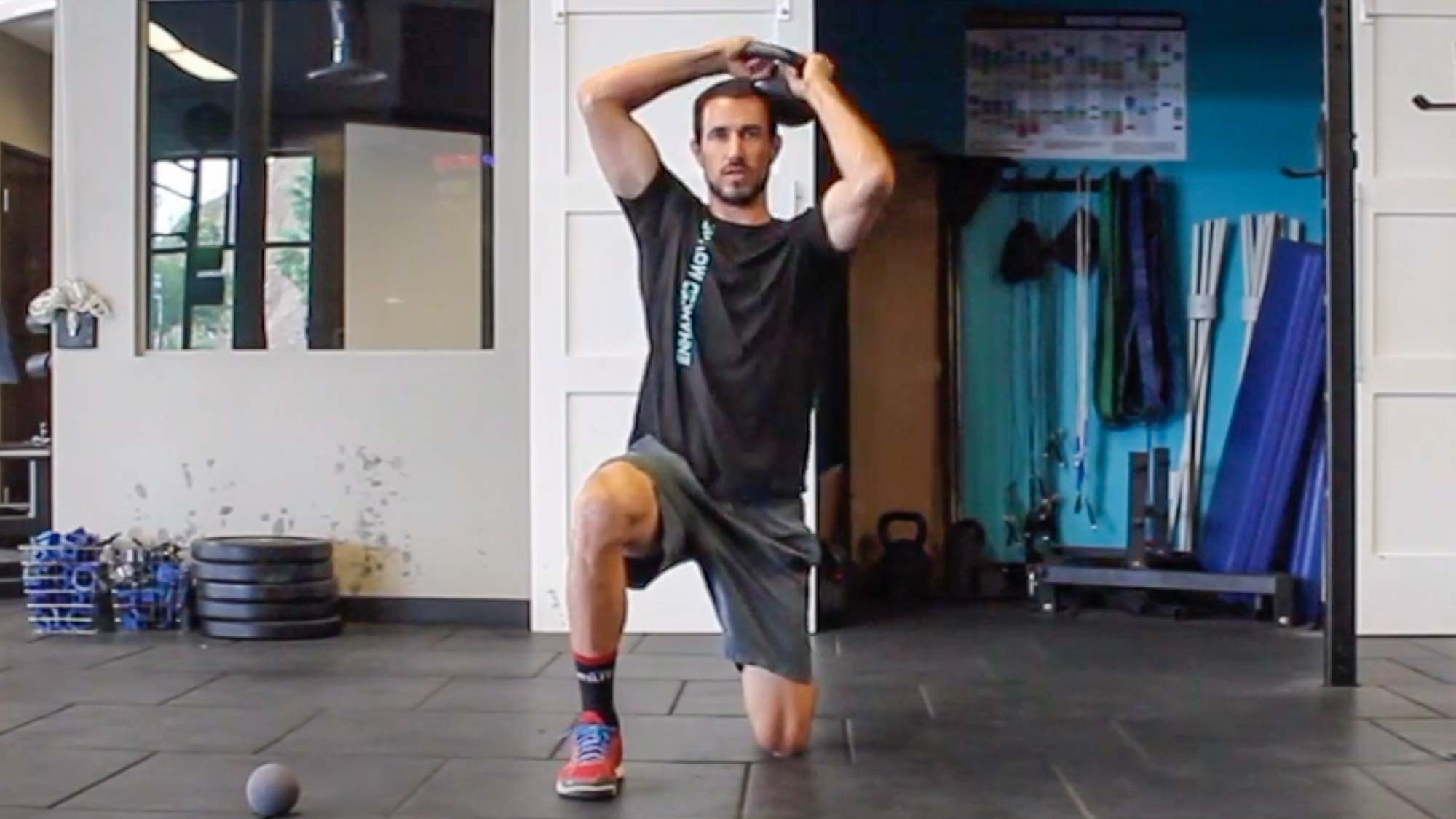
Great for shoulder mobility and strengthening your shoulders and upper back, kettlebell halos also require lower back and core stability to safely circle a weight above your head.
- Start in a half-kneeling position with your right foot planted forward and knee bent
- Grip a kettlebell in both hands and engage your core
- Begin circling the kettlebell around your head
- Keep your spine tall and avoid arching your back. Complete reps in one direction, then switch.
5. Kettlebell sit-up
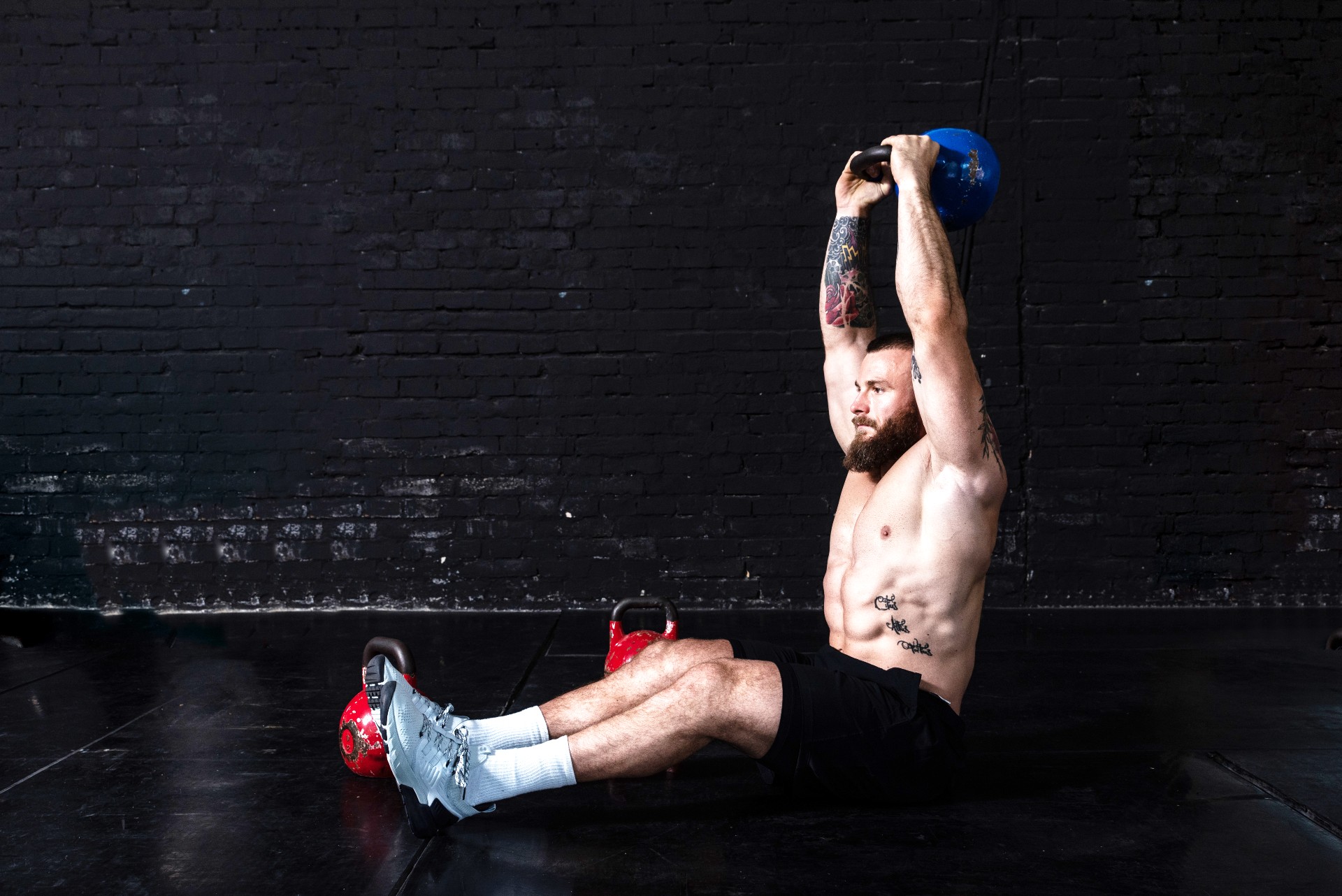
Challenge shoulder stability and core strength by loading your sit-ups with one or two kettlebells. Start with knees bent and feet planted down, and progress to extending your legs in front of you.
Sit-ups are a core torcher known for strengthening your abs, but this variation also targets your lower back, hip flexors, arms and shoulders.
- Start on your back with knees bent and feet planted down, or legs extended in front
- Hold a kettlebell in both hands or a kettlebell in each hand and arms extended over your chest
- Engage your core, then sit up, keeping your arms extended overhead
- Gently push your head between your arms at the top
- Slowly lower back down to the ground with control.
You could add these moves into your existing ab program or combine them into a five-move ab workout of your own. If you plan to do that, aim for 8-12 reps per side, per exercise, and repeat for 3-5 rounds. For the farmer's hold, aim to hold for 30-60 seconds.
More from Tom's Guide
Here are more ways to engage your mind and your core muscles.
- Our writer did 100 kettlebell swings a day and here's what happened
- Try this 3-move kettlebell abs workout to build and sculpt core muscles
- We swear by this 3-move back and biceps workout.







